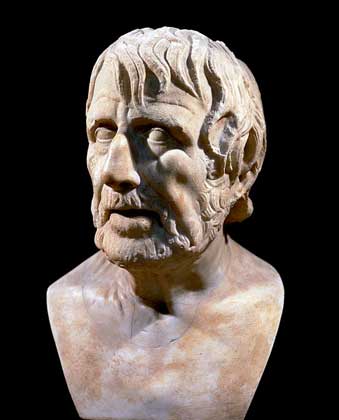The directory «Plots»
Seneca the younger
(c.3 B.C.–A.D. 65)

Roman philosopher, dramatist, and statesman, b. Corduba (present-day Córdoba), Spain. He was the son of Seneca the elder. The younger Seneca went to Rome in his childhood, studied rhetoric and philosophy, and earned renown as an orator when still a youth. He was exiled by Claudius (A.D. 41) ostensibly because of his intimacy with Julia, Claudius’ brother Germanicus’ daughter. In A.D. 49 he was recalled at the urgings of Agrippina the Younger to become tutor of the young Nero. In the first years of Nero’s reign Seneca was virtual ruler with Afranius Burrus, and their influence on the emperor was probably for the best. But the ascendancy of Poppaea, Nero’s wife, brought about first the death of Agrippina (A.D. 59), then that of Burrus (A.D. 62). Seneca asked to retire. He had amassed a huge fortune and wanted no more of court life. Accusations of conspiracy were finally leveled at Seneca, who, instructed to commit suicide, slashed his veins. His death scene was considered remarkably noble by the Romans. Seneca was a Stoic, and his writings show a high, unselfish nobility considerably at variance with his own life, in which greed, expediency, and even connivance at murder figured. His Epistolae morales ad Lucilium are essays on ethics written for his friend Lucilius Junior, to whom he also addressed Quaestiones naturales, philosophical—rather than scientific—remarks about natural phenomena. The so-called Dialogi of Seneca include essays on anger, on divine providence, on Stoic impassivity, and on peace of soul. Other moral essays have also survived, notably De elementia, on the duty of a ruler to be merciful, and De beneficiis, on the award and reception of favors. The Apocolocyntosis is a satire on the apotheosis of Claudius. The most influential of his works, at least in so far as European literature is concerned, were his tragedies. It is generally agreed that his plays were written for recitation and not for stage performance. Nine plays, based on Greek models, are accepted as his—Hercules Furens, Medea, Troades, Phaedra, Agamemnon, Oedipus, Hercules Oetaeus, Phoenissae, and Thyestes. A tenth, Octavia, is now ascribed to a later imitator. Although his drama has been deprecated in modern times, no author had a stronger influence on Renaissance tragedy than did Seneca. His atmosphere of gloom, his horrors, his rhetoric and bombast, his stoicism, were all essential contributions to the forming of Renaissance tragedy. The most significant play influenced by Seneca was Thomas Kyd’s The Spanish Tragedy.
Ajman, 1968, The Four Philosophers
Guinea Bissau, 2010, The Four Philosophers
Korea Nord, 1981, The Four Philosophers
Maldives, 1977, The Four Philosophers
Maldives, 2000, Death of Seneca
Mauritanie, 1977, The Four Philosophers
San-Marino, 2008, Marchesi and bust of Seneca
Sao Tome e Principe, 1983, Death of Seneca
Spain, 1966, Seneca
Spain, 1986, Seneca
St. Vincent, 2001, Death of Seneca
Yemen (Kindom), 1968, The Four Philosophers